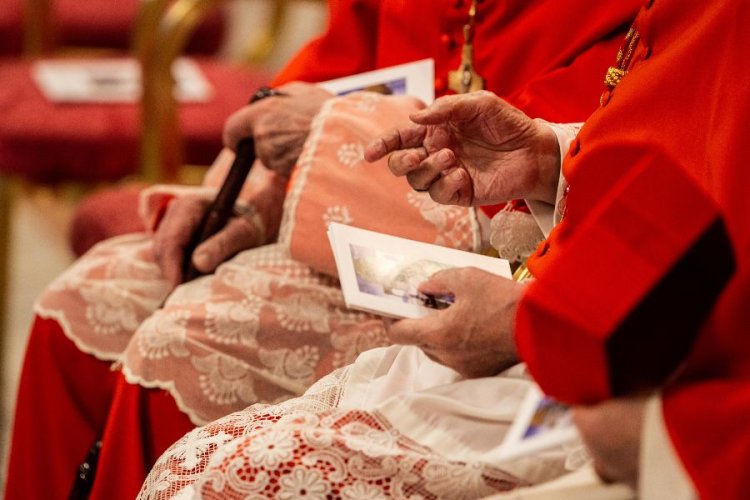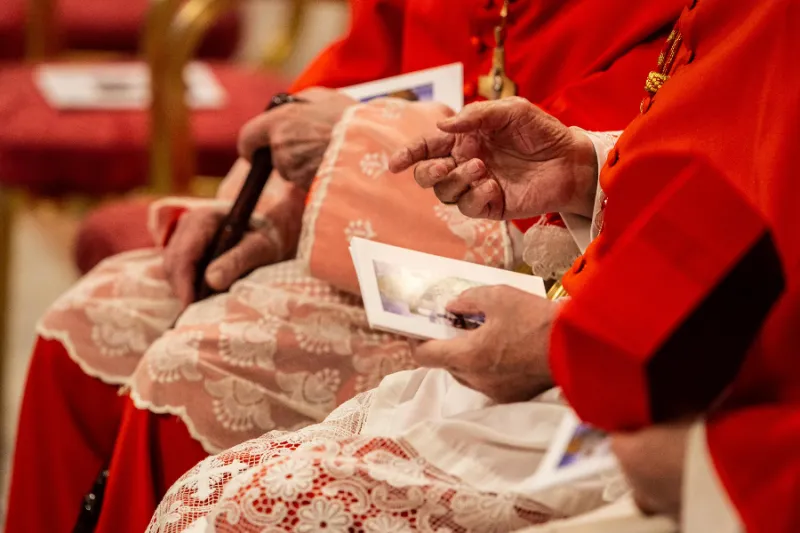Pope Francis has made College of Cardinals ‘less European,’ analysis shows
A consistory for the creation of new cardinals in St. Peter’s Basilica on Oct. 5, 2019. / Daniel Ibáñez/CNA. Washington, D.C. Newsroom, Jul 20, 2022 / 17:46 pm (CNA). Pope Francis’ picks for the College of Cardinals have made the body “less European,” giving a greater voice to developing nations in Africa, Asia, and Latin America, a new analysis shows.The Pew Research Center report focused on the 83 cardinals appointed by the Argentinian pope now under the age of 80 who are eligible to vote in a papal conclave.Those appointees, 16 of whom won’t be installed until Aug. 27, currently make up a majority (63%) of the 132 voting-age cardinals. Francis’ predecessors, Pope St. John Paul II and Pope Emeritus Benedict XVI, appointed the remaining cardinals.Europeans account for the plurality of Francis’ voting-age appointees — 28, or 34% of the total, the most of any region. But once the latest batch of appointees is installed, Europe will have seen its share shrink to 40%, down from 52% in 2013 when Francis was elected.Meanwhile, other parts of the world have gained ground, led by the Asia-Pacific region, whose overall representation of voting-age cardinals has risen from 9% in 2013 to 17% in 2022, the analysis shows.Sub-Saharan Africa is on the upswing, as well, rising from 9% to 12%. Latin America and the Caribbean has had a more modest gain, rising from 16% to 18%.“Of the 83 newly appointed or currently eligible voting cardinals Francis has named so far during his papacy, 34% are from Europe, 22% from the Asia-Pacific region, 20% from Latin America and the Caribbean, 13% from sub-Saharan Africa, 8% from North America and 2% from the Middle East-North Africa region,” Pew reported.

 A consistory for the creation of new cardinals in St. Peter’s Basilica on Oct. 5, 2019. / Daniel Ibáñez/CNA.
A consistory for the creation of new cardinals in St. Peter’s Basilica on Oct. 5, 2019. / Daniel Ibáñez/CNA.
Washington, D.C. Newsroom, Jul 20, 2022 / 17:46 pm (CNA).
Pope Francis’ picks for the College of Cardinals have made the body “less European,” giving a greater voice to developing nations in Africa, Asia, and Latin America, a new analysis shows.
The Pew Research Center report focused on the 83 cardinals appointed by the Argentinian pope now under the age of 80 who are eligible to vote in a papal conclave.
Those appointees, 16 of whom won’t be installed until Aug. 27, currently make up a majority (63%) of the 132 voting-age cardinals. Francis’ predecessors, Pope St. John Paul II and Pope Emeritus Benedict XVI, appointed the remaining cardinals.
Europeans account for the plurality of Francis’ voting-age appointees — 28, or 34% of the total, the most of any region. But once the latest batch of appointees is installed, Europe will have seen its share shrink to 40%, down from 52% in 2013 when Francis was elected.
Meanwhile, other parts of the world have gained ground, led by the Asia-Pacific region, whose overall representation of voting-age cardinals has risen from 9% in 2013 to 17% in 2022, the analysis shows.
Sub-Saharan Africa is on the upswing, as well, rising from 9% to 12%. Latin America and the Caribbean has had a more modest gain, rising from 16% to 18%.
“Of the 83 newly appointed or currently eligible voting cardinals Francis has named so far during his papacy, 34% are from Europe, 22% from the Asia-Pacific region, 20% from Latin America and the Caribbean, 13% from sub-Saharan Africa, 8% from North America and 2% from the Middle East-North Africa region,” Pew reported.













